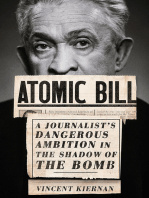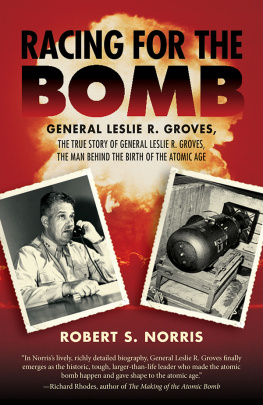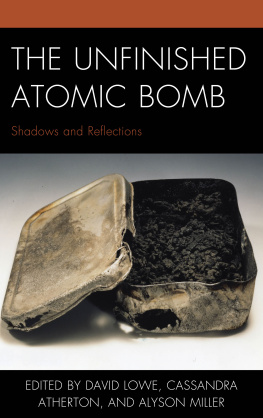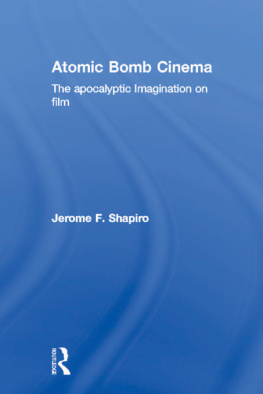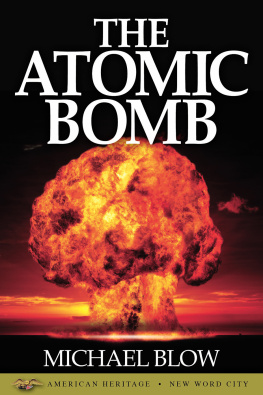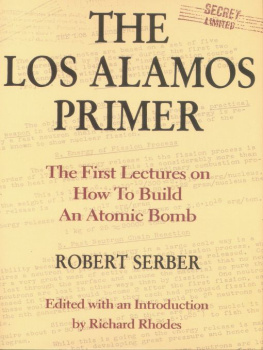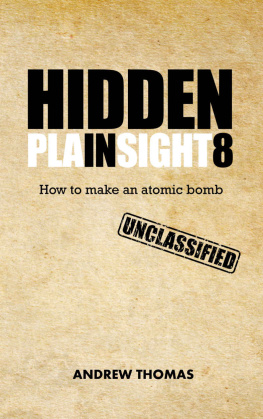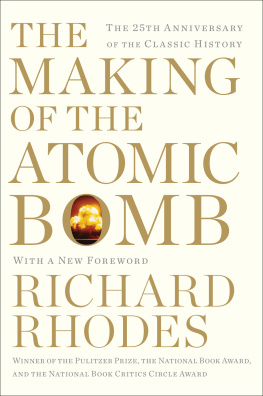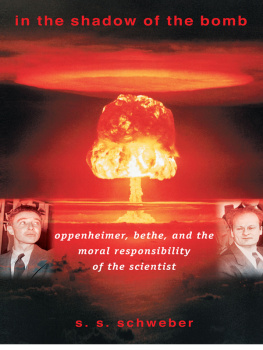Atomic Fragments:
A Daughter's Questions
Mary Palevsky

(p.iv)
- This book is a print-on-demand volume. It is manufactured using
- toner is place of ink. Type and images may be less sharp than
- the same material seen in traditionally printed University of
- California Press editions.
- University of California Press
- Berkeley and Los Angeles, California
- University of California Press, Ltd.
- London, England
- Library of Congress Cataloging-in-Publication Data
- Palevsky, Mary, 1949
- Atomic fragments: a daughter's questions / Mary Palevsky.
- p. cm.
- Includes bibliographical references and index.
- ISBN 0520220552 (cloth: alk. paper)
- 1. Manhattan Project (U.S.)History. I. Title.
- QC773.3.U5 P35 2000
- 3S5.8251190973dc21 99087422
- ClP
- Manufactured in the United States of America
- The paper used in this publication meets the minimum
- requirements of ANSI/NISO Z39.481992 (R 1997)
- (Permanence of Paper).
- The author is grateful for permission ro reprint excerpts
- from: Freeman Dyson, Non-use and Non-violence, talk
- given at Oak Ridge Symposium of Nuclear Weapons, May
- 4, 1995; Bernard J. Lonergan, Insight: A Study of Human
- Understanding, The Philosophical Library, 1957.
Dedication
(p.v) For my parents

[UNTITLED]
(p.vi)
- We are struggling to come to terms with a drama
- too large for a single mind to comprehend.
- FREEMAN DYSON
- Non-Use and Non-Violence
- The totality of documents cannot be interpreted scientifically
- by a single interpreter or even a single generation of interpreters.
- There must be a division of labour, and the
- labour must be cumulative.
- BERNARD LONERGAN
- Insight: A Study of Human Understanding
(p.ix) Preface
September 1, 1989, marked the fiftieth anniversary of Hitler's invasion of Poland. Six years later, after a series of half-century commemorations, our nation celebrated the end of World War II, while fiercely debating the atomic bombings of Hiroshima and Nagasaki that brought it to a close. This era of public remembering coincided with a private turning point in my life: it was the season of my parents' deaths, and of my mourning for them. Through my mother and father, I am connected to one of the great and controversial issues of the warthe creation of the atomic bomb.
This is a study in memory and meaning, an exploration of the intersection of the personal and public, through life spans and across generations. Questions about the moral and ethical implications of the bomb have always been in the background of my life. I write in an attempt to organize and freeze the experience of stepping into a stream that has been flowing through my subconscious for as long as I can remember. Over the years there have been times when these issues have come to the foreground. This occurred most powerfully during the fiftieth anniversary of World War II's end.
A January 1995 meeting with Nobel laureate Hans A. Bethe proved to be the starting point from which I traveled to interview sixteen Manhattan Project scientists and several of their colleagues. Our dialogues focused on the web of relationships connecting the war, the bomb, science, and society at large. The controversies surrounding the fiftieth (p.x) nniversary of the war's end served as the backdrop for many of our discussions and brought to light the ways in which questions of morality and ethics exist in the real world of human history. The multiple narratives emerging a half century after the making of the bomb formed the warp on which the weft of the interviews was anchored and woven.
It was in the context of the discovery of fission, followed by World War II, that traditionally academic scientists, fearing a Nazi nuclear bomb, became the creators of the first weapon of mass destruction. My endeavor was to comprehend the ways in which individual scientists made choices about the bomb and made sense of their work. At best our conversations were creative encounters during which we struggled with the meaning of one of the twentieth century's most daunting legacies. This work is an attempt to make explicit the human intersubjectivity that embodies such meaning.
The location for our dialogues was the laboratory. I am referring not to one laboratory but to a collective of the many historical places where the scientists have spent their working lives. There is the Metallurgical Lab, the Manhattan Project site at the University of Chicago. Its name was a code, meant to disguise the real activities of Enrico Fermi and his colleagues as they worked to create the first man-made chain reaction. Suspended in the midst of a great university in a major American city, the shifting boundaries of the Met Lab were defined not by architecture but by awareness. Fermi's atomic pile was hidden beneath the West Stands of Stagg Field, the university's athletic stadium. Even Robert Maynard Hutchins, the university's president, did not know what was transpiring there.
In contrast, Site Y, Los Alamos, was built in the isolation of the northern New Mexico mesas, on the evacuated campus of a private boys' school. Under J. Robert Oppenheimer's leadership, scientists from institutions nationwide and from Europe joined intellectual forces to produce the bomb. Many Manhattan Project scientists came from or had studied in the great tradition of the laboratories of Europe's ancient universities, Cambridge and Oxford, Gttingen and Tbingen; in Copenhagen's Niels Bohr Institute; at Fermi's Roman laboratory; and with Irne and Frdric Joliot-Curie in Paris.
(p.xi) Refugee physicists Lise Meitner and Otto Robert Frisch were in the Swedish countryside when they discovered nuclear fission. Together during the 193839 Christmas holiday, Meitner and her nephew, Frisch, labored over experimental results that radiochemist Otto Hahn and his assistant, Fritz Strassman, had sent from the Kaiser Wilhelm Institute in Berlin. Their discussions during long walks in the snow led to the insight that Meitners German colleagues had split the uranium nucleus. Thus the laboratory also exists in each scientist's consciousness.
The first laboratory in my experience was Brookhaven National Laboratory, where my father worked as an experimental nuclear physicist. Unlike the fine old institutes of Europe or their elegant Ivy League descendants, Brookhaven is plain. A converted World War I army barracks at Camp Upton on the Long Island flatlands is where I went with my father to meet his international colleagues and tour the giant machines they were building. Although nuclear weapons are not made at Brookhaven, other post-World War II laboratories are devoted to them. There is, of course, Los Alamos. Then, in 1952, the University of California Radiation Laboratory at Livermore was built, inland and equidistant from the halls of Stanford and the Berkeley hills. The scientists move among the many laboratories with ease.


